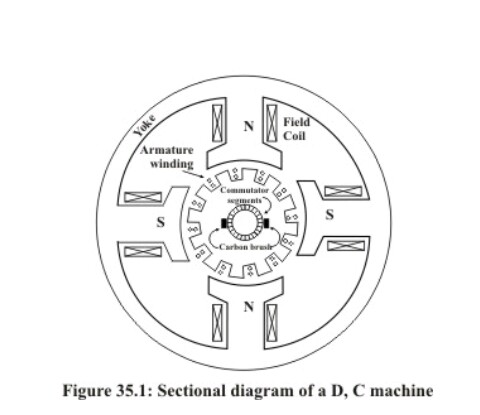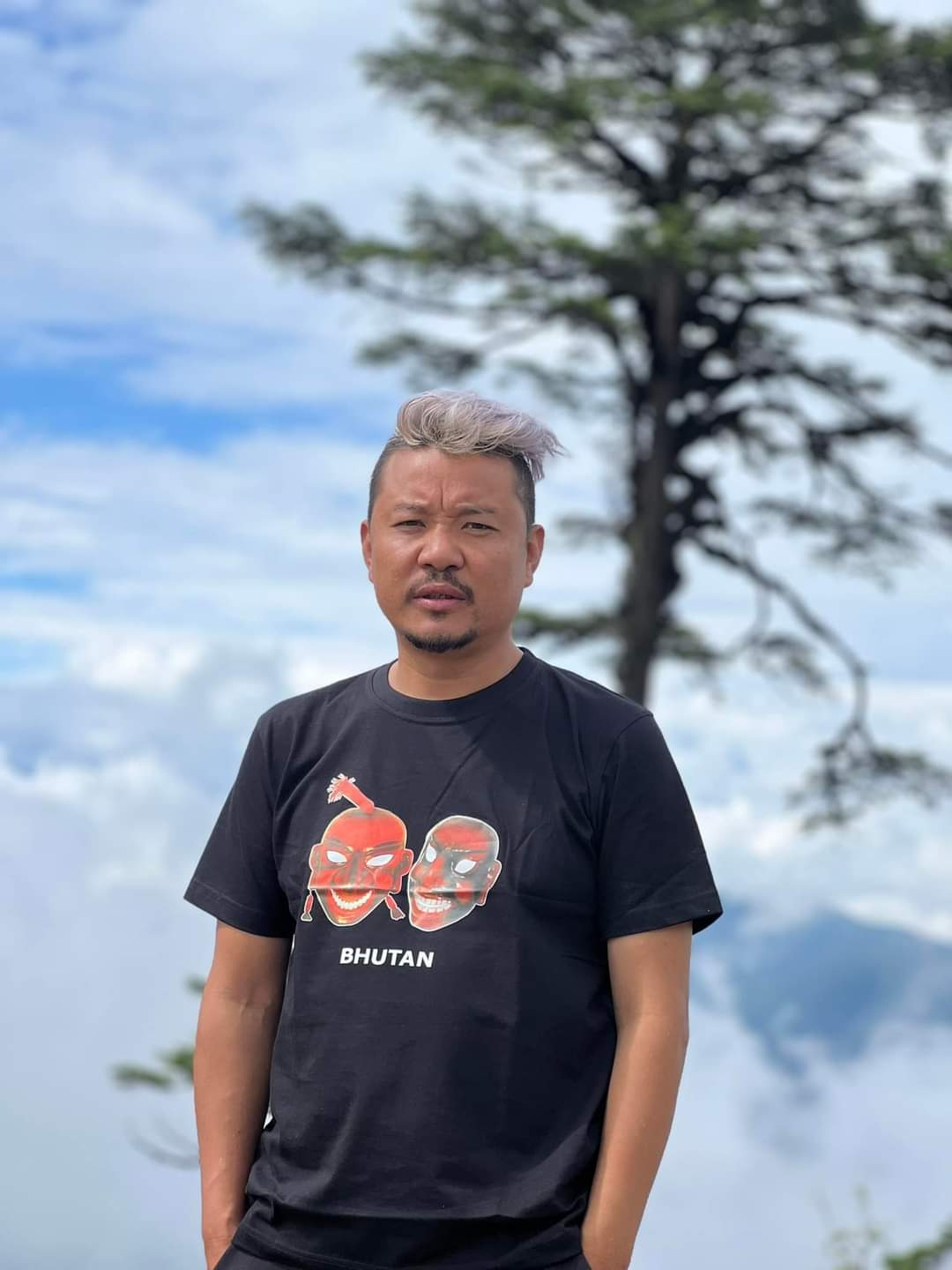Constructional Features
Figure 35.1 shows a sectional view of a 4-pole D.C machine. The length of the machine is
perpendicular to the paper. Stator has got 4 numbers of projected poles with coils wound over it.
These coils may be connected in series in order that consecutive poles produce opposite
polarities (i.e., N-S-N-S) when excited from a source. Double layer lap or wave windings are
generally used for armature. Essentially all the armature coils are connected in series forming a
closed armature circuit. However as the coils are distributed, the resultant voltage acting in the
closed path is zero thereby ensuring no circulating current in the armature. The junctions of two
consecutive coils are terminated on to the commutator segments. Stationary carbon brushes are
placed physically under the center of the stator poles touching the rotating commutator segments.
Now let us examine how a D.C voltage is obtained across the brushes (armature
terminals). Let us fix our attention to a particular position in space. Whichever conductor is
present there right now, will have some definite induced voltage in it (dictated by e = blv). In
course of rotation of the armature newer conductors will occupy this position in space. No
matter which conductor comes to that particular position at any given point of time, it will have
same voltage induced in it. This is true for all the positions although the magnitude and polarity
of the voltages in different position may be different. The polarity of the voltage is opposite for
conductor positions under north or south pole. Remembering that all the conductors are
connected in series and brushes are suitably placed for obtaining maximum voltage, the
magnitude of the voltage across the brushes will remain constant.
To understand the action of the commutator segments and brushes clearly, let us refer to
the following figures (35.3 and 35.4) where a simple d.c machine working as generator are
shown with armature occupying various positions. Armature has got a single rectangular coil
with sides 1 and 2 shown in detail in figure (35.2). The two terminals 1 and 2 of the coil are
firmly joined to commutator segments C1 and C2 respectively. Commutator segments C1 and
C2, made of copper are insulated by mica insulation shown by lines between C1 and C2 and
rotate along with the armature.



No comments:
Post a Comment